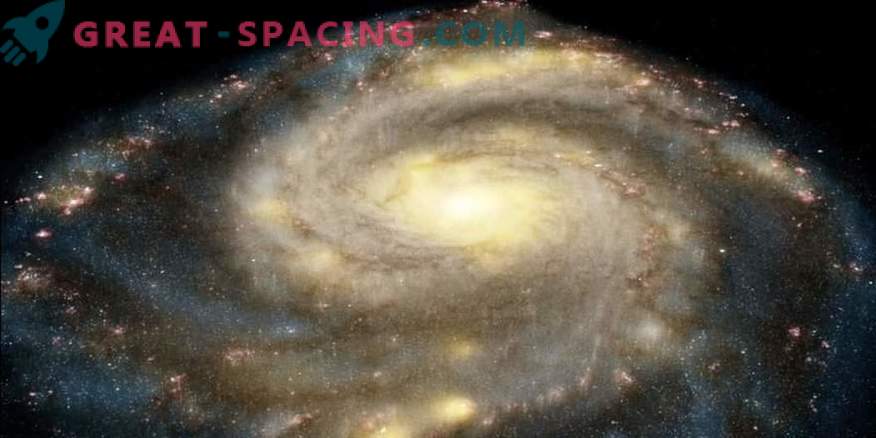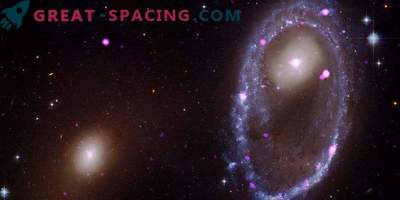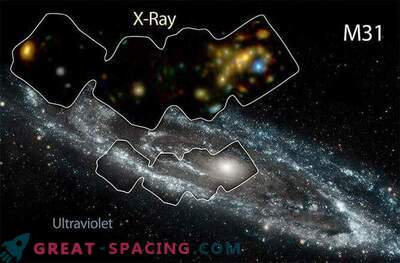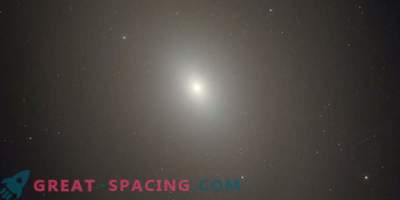
The Swirl Galaxy demonstrates an amazing new visualization that combines the observations of the Hubble and Spitzer space telescopes, as well as the Chandra X-ray Observatory
Three powerful space observatories displayed the Whirlpool galaxy (Messier 51 or NGC 5194), demonstrating the bright events of the birth and death of stars. Managed to visually follow the wavelength of the galaxy. This zone has a supernova, 30 million light years away from us in the direction of the constellation Hounds Dogs.
Scientists believe that the Whirlpool galaxy is the clearest example of the spiral type. Observations at different wavelengths show various structures in the galaxy. In three dimensions you can see how the spiral arms rotate through the disk in the form of a pancake.
Visible light (Hubble Space Telescope), infrared (Spitzer) and X-rays (Chandra) were used to create the image. In the visible light, it is possible to find more ancient and younger stars: the yellow old ones are located closer to the center, and the young blue ones are grouped in spiral arms. In the infrared light displays the reddest of the ancient stars that inhabit the entire galactic space. With the help of X-rays, it is possible to demonstrate high-energy areas, including energy emissions from binary star systems with black holes or neutron stars.
Different wavelengths also help to reveal the overall galactic structure. In the center is a supermassive black hole, releasing powerful X-rays. Cold gas and dust in the sleeves shine in the infrared reviews. More hot gas hints at the existence of supernovae.











































